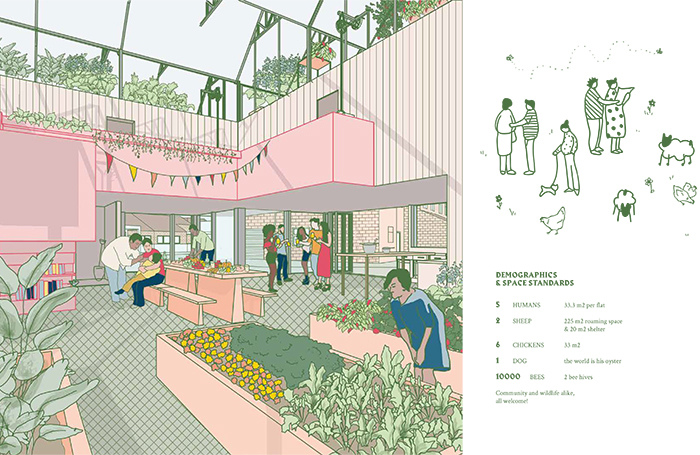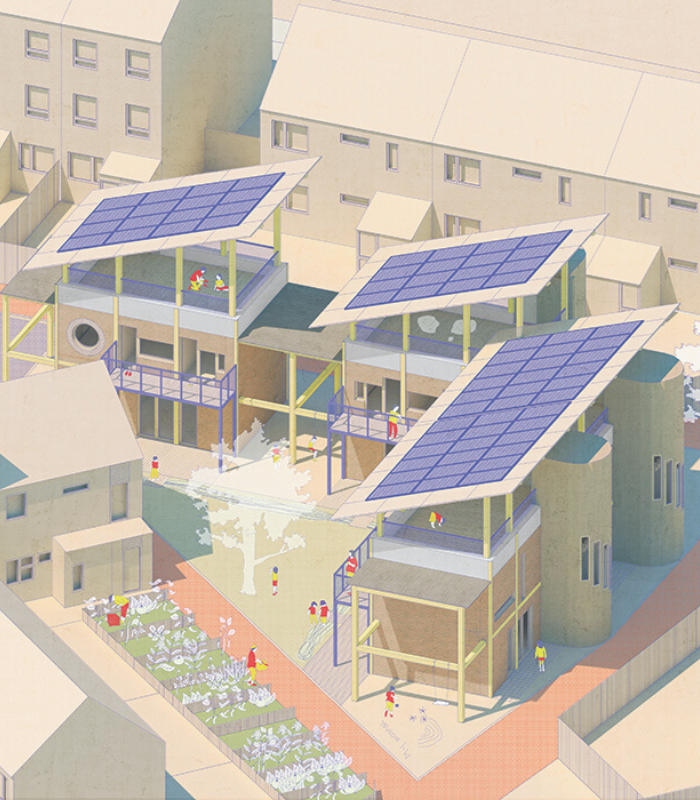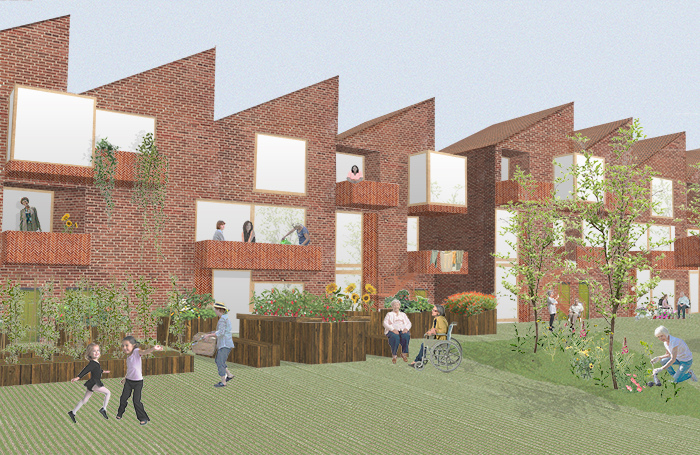Three Part 1 students from the University of Nottingham have recently been shortlisted for the MOBIE (Ministry of Building Innovation and Education) Home of 2030 Young Persons’ Design Challenge. The idea to approach the Home of 2030 project from the social housing perspective grew from a previous research collaboration with the local housing authority Nottingham City Homes, and its residents, in celebration of the centenary of the Addison Act.
100 years ago, social housing was proposed as a reaction to the failure of the private market to provide decent homes for everyone. Today, the housing market is facing similar issues. The shortlisted projects offer innovative and thought-provoking solutions to create the ‘home of the future’ for the next generation.

Rachael Milliner’s Home of 2030 tackles topical issues:
“Social and environmental justice are intrinsically linked and the last 50 years of neoliberalism has all but decimated sight of either in the UK housing market. ‘Urban co-Existing’ is a co-living social housing unit for people to whom currently sustainable housing is not financially accessible. This is a project that, over the centenary of the Addison Act, creatively explored how to reintroduce sustainability to housing design with social and environmental justice as the design driver.
11% of homes in the UK are reported to be in fuel poverty as use of food banks only increases. The concept of this design harnesses solar gain as an environmental strategy and to grow food. Architecture that’s not just sustainable but productive.
Co-living allows sharing of resources and fosters community. By decentralising our resources and living with an intent of sustainability, throughout the entire life cycle of the building, a new typology can be introduced into the urban environment to help tackle the housing crisis whilst living in ways kinder to our planet.”

Henri Kopra has targeted a specific demographic – lone parent families – to investigate how the Home of 2030 might solve the housing crisis for them:
“The stigma, that the notorious “Right to Buy” policy has created around social housing, needs to be addressed when designing the built environment. In my view, the Home of 2030 is one that is truly affordable for everyone, designed to grow and decrease according to its inhabitants’ needs and with minimal environmental impact , that is with zero lifetime emissions and designed for disassembly and reuse.
According to Nottingham Post, more than 700 out of nearly 2400 homelessness cases in 2019 were single women with children. As such, the Meadows garage site infill scheme focuses on this demographic, providing a new beginning to single parents and their children, as well as enhancing the community with new semi-public leisure areas to tie the project into the mixed tenure estate. The design is solved in depth on the Oxbow Close garage site but is implementable on all other garage sites in the Meadows estate in Nottingham.”

Similarly, Ella Rogers imagines the Home of 2030 through a set demographic – elderly women:
“When approaching this design, I was keen to focus on tackling social isolation within older generations. My initial research highlighted the statistics that in the UK, 3.64 million people over the age of 65 live alone and that nearly 70% of these are women. This led me to explore this client group and the suitability of the atypical model of co-housing, particularly the opportunities this provides for fostering relationships and encouraging social interactions.
I was mindful of the need to create positive and dynamic communal areas both indoors and outdoors whilst allowing the women to maintain their independence with their own bedsit units. Additionally, I found interest in studying circulation within the scheme; by exposing the stairways and entrances, the scheme embodied a sense of social security through the philosophy of 'eyes on me'.
The potential to physically look out for each other reflects a true feeling of neighbourliness and collective care. With an extended reach into the public realm, I am proud of the potential this scheme holds and believe it demonstrates the power of architecture and its responsibility for creating relationships with the communities we live in.”
The finals for the shortlisted entries are scheduled to be held in autumn in London.
This student project was submitted through RIBA Future Architects; our network and community for future and emerging architects, designed to support, inspire and provide a voice as you transition from study to practice. View our resources here.









